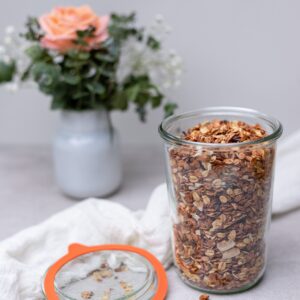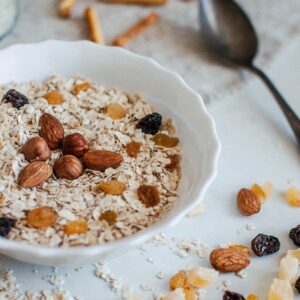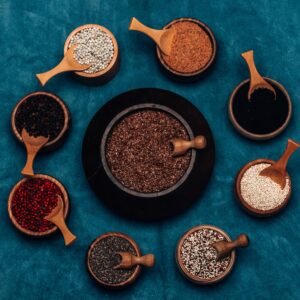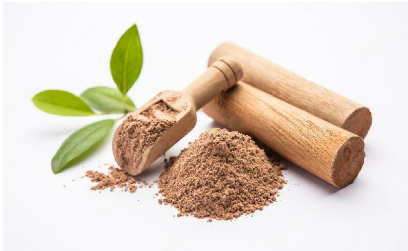Introduction:
Carbohydrates are an essential part of a healthy diet. Cereals are a high source of carbohydrates we need for our regular nutritional requirements.[Whole grains and cereals] It is part of the staple diet, and nearly 50% of production is consumed as human food. Some of the well-known and widely used cereals in Asia and Africa are Rice, wheat, millet, corn, barley, oats, and sorghum. Buckwheat and amaranth are called pseudo-cereals.
Besides human food, cereals are also used for draft and dairy animals, poultry, and alcohol as well.[Whole grains and cereals]

Whole grains and cereals
Whole grains and cereals are the seeds of grasses that are processed into cereals.[Whole grains and cereals] Some of the widely available whole grains are wheat, rice, maize, millet, barley, and oats. Whole grains are part of the staple diet in various parts of the world and are a rich source of vitamins, fiber, and minerals. Besides vitamins like iron, manganese, zinc, and magnesium, they are also rich in antioxidants and plant protein.[Whole grains and cereals]
They help maintain heart health and avoid heart disease and stroke. It also helps prevent diabetes, obesity, and some types of cancer. Wholegrains have healthier polyunsaturated fatty acids and are also low in saturated fat.[Whole grains and cereals]
There are three main parts to Whole grains and cereals:
- Bran – the outer layer of the grain containing fiber, omega-3 fatty acids, vitamins, and minerals.
- Endosperm – it is the starch and main part of the grain.
- Germ –contains vitamin E, folate, thiamine, phosphorus, and magnesium and is the smallest part of the grain.[Whole grains and cereals]

Benefits:
- Supports heart health and protects
Whole wheat grains and cereals are high in fiber and control cholesterol levels which helps lower cardiovascular risks.[Whole grains and cereals] Oats are significantly found to reduce cholesterol levels.
- Helps in Diabetes
Regular consumption of whole grains helps prevent diabetes for high fiber content. It also helps control sugar levels when consumed regularly. The high fiber and protein content in whole grains help reduce or balance blood sugar levels and provide a good source of healthy fats or protein. The complex carbs in whole grains take time to digest and help control blood sugar and insulin levels.
- Helps reduce Inflammation
Consumption of high fiber helps reduce weight which also helps reduce inflammation in the human body eventually to some extent. Some whole grains like millet and barley are anti-inflammatory. Whole wheat food products should be consumed moderately for the presence of gluten in them, but it is an important part of a healthy diet for its various nutritional benefits.
- Improves digestion
The amount of dietary fiber and carbohydrates present in whole wheat aids digestion. Carbs also act as a source of energy or fuel for the human body. Apart from improving the digestive system, fiber also helps fight chronic disease. Regular consumption of whole wheat grains helps in digestion and gut health. It also reduces or prevents the risks of colorectal cancer.
- Protective chemicals in whole grains
There are some chemicals in whole grains which help protect from various ailments. Lignans lower the risk of coronary heart disease and slow or prevent cancer in animals. Phytic acid is good for diabetic patients and helps prevent colon cancer. It helps reduce the glycaemic index of food. Phenolic compounds have antioxidant effects, and squalene, oryzanol, saponins, and phytosterols, help lower cholesterol.

Pseudocereals:
Pseudocereals come from fruits and seeds of plants that are used as cereals or grains. These are high in protein, also taken as whole grains but are gluten-free. Some of the widely used pseudocereals are Amaranth, buckwheat, quinoa, and chia. Sometimes pseudocereals are also called ‘ancient grains.’
Quinoa:
Quinoa is a gluten-free and high-protein seed easily available at stores. There are three varieties, white, red, and black. It is good to soak it after washing and then cook. It is easy to cook and needs twice the amount of water; ex: one cup of quinoa needs two cups of water. It can be cooked with vegetables and added to salad or soups. There are various ways to consume a bowl of quinoa. It is also a good option for a nutritious breakfast added with yogurt and fruits.
Buckwheat:
Buckwheat seed comes from plants like sorrel and rhubarb. It is available as flour or groats. Flour is used to make porridge with added sweeteners, fruits, and nuts. One part of buckwheat needs 3 parts of water and around 45 mins to cook. Pre-sprouted buckwheat is also consumed. Russia, Ukraine, and China are among the highest producers of buckwheat. In India, it is consumed in many ways and during religious occasions like Maha Shivratri.
Buckwheat contains essential nutrients such as vitamins (B1, B2, B3, and B6), minerals, copper, zinc, and manganese.[Whole grains and cereals] It is also a good source of potassium, dietary fiber, selenium, and other components like polyphenols, flavonoids, and organic acids beneficial for health.
Amaranth:
Amaranth mainly originated from Mexico. It is also prepared by boiling in water and mixed with other ingredients like vegetables or meat to make a full meal. This gluten-free diet is nutritious to consume with fruits and nuts as breakfast. Amaranth is rich in calcium, iron, manganese, dietary fibers, lipids, and antioxidants. It also has anti-cancerous and anti-malarial properties, which help sustain health. It is also anti-microbial and is considered one of the best superfoods available for human health.
Chia seeds:
Chia seeds are best to soak in water and consume. Soaking increases their volume a gel-like texture is seen after soaking. It is used in smoothies, muffins, pudding, shakes, and more.[Whole grains and cereals] Chia seeds are a superfood that is small but highly nutritious and consumed for a long time as a staple food. Salvia hispanica L. is the plant source of chia seeds popular initially in Mexico and Guatemala.
Chia seeds contain all 9 essential amino acids and are good in protein content. They are also good in fiber, unsaturated fat, zinc, calcium, and copper. They are also a high source of omega-3 fatty acids. About 28 grams of chia seeds contain 140 calories. These seeds are gluey in texture when soaked in water. They are good in soluble fiber, which lowers LDL cholesterol. The presence of omega-3 fatty acids supports or improves cardiovascular health and controls cholesterol and blood pressure. It also reduces inflammation and helps with weight loss management.
Kaniwa:
Kaniwa is like quinoa for its preparation method but easier to cook for the absence of saponin coating.[Whole grains and cereals] It is a little crunchy in taste and consumed with vegetables, nuts, fruits or added to salads, etc. Kaniwa is high in protein, iron, vitamin B, carbohydrates, and fiber but low in calories.
ConclusionThese grains and cereals are a good source of nutrition and can be quickly added to various recipes. They easily blend and add additional texture and health benefits to your daily diet. It is also advisable to consume moderate quantities of the presence of gluten in some of the grains.[Whole grains and cereals] Incorporating these nutrition-rich grains with multiple vegetables, meat, nuts, or fruits makes different types of healthy meals packed with essential vitamins and minerals. Refined products are also available in the market, which loses some amount of nutritional value for the refining process.[Whole grains and cereals]
Internal links:
Interesting Facts about Walnut – Erakina
Apricots, the fiber rich fruit – Erakina
External links:
Date: 21/07/2022






